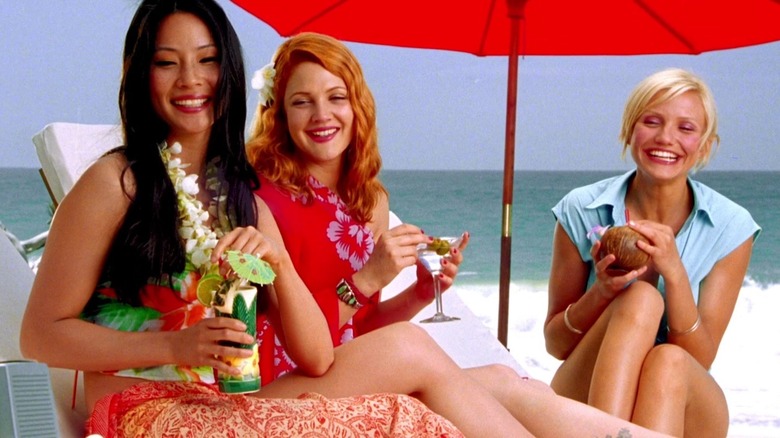
When a film or a television show is well-written, even characters who never appear on-screen can cast a long shadow. Think of all the titles where the titular character is nothing but a memory. There are also horror films where the frightening monster remains offscreen but terrifies the viewer nonetheless. In television sitcoms, the notion of the unseen character often becomes an amusing gag. Some viewers love this narrative trick for its hilarity or sinister abilities whereas others hate it.
By dangling these characters out of reach, film and television writers toy with our desire to see more -- forcing viewers to use their imaginations and envision what these individuals look like and who they are. Whether you love this trope or hate it, it's one you're bound to encounter now and then. To better understand how this practice has endured, here's a handy list of some of the most famous fictional characters never shown on screen.
Mrs. Columbo (Columbo)
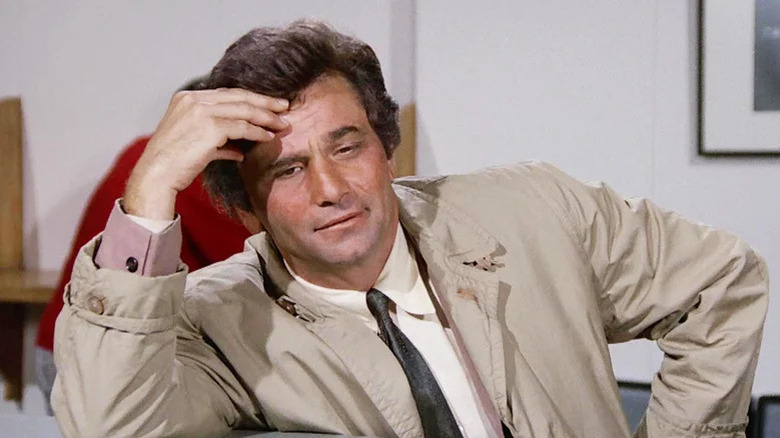
Lieutenant Columbo, played by the great Peter Falk, might be the most beloved television detective. "Columbo" ran for an impressive ten seasons -- with a ten-year break between seasons 7 and 8 -- and remains extremely popular today. Columbo is known for his many eccentricities, including his perpetually rumpled raincoat, strategic clumsiness, and often-mentioned but unseen wife.
Columbo talks about his wife all the time, usually when he's interrogating a suspect. He always seems to have a perfect anecdote about her that will get the alleged murderer to open up. Columbo's stories about Mrs. Columbo seem suspiciously on the nose, which is why some viewers have questioned whether she exists. One of the show's creators, William Link, suggested Columbo may have made up his wife "to make a point." However, Peter Falk told James Lipton he thinks Columbo has a wife but that his number of relatives has been exaggerated.
You might think the spin-off series "Mrs. Columbo" clarifies if Mrs. Columbo exists, but you'd be wrong. Initially, the titular character, played by Kate Mulgrew, was supposed to be Columbo's wife. However, that idea wasn't popular amongst viewers, so they changed her backstory and gave her an entirely new (ex) husband.
The President (Veep)
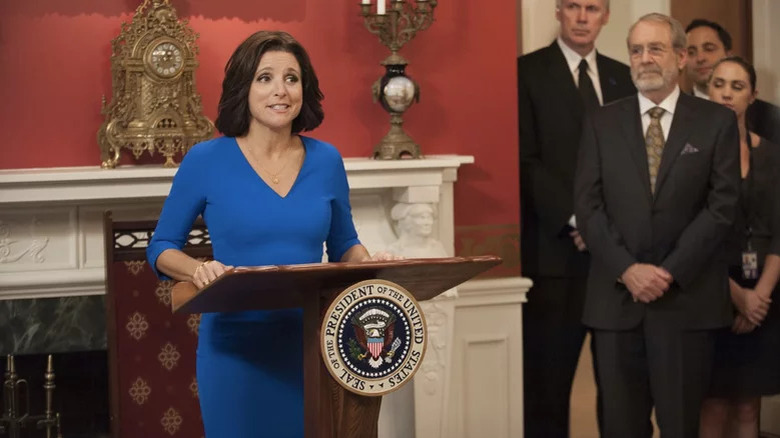
Typically, when a film or a television series takes place in the White House, the President is an important character. But that's not the case in the HBO series "Veep," which follows Vice President Selina Meyer (Julia Louis-Dreyfus). The show is a satirical comedy, so it makes sense that the series takes some liberties with the inner workings of the West Wing. But the decision to exclude the President from the show was an intentional move on the part of the writers with serious implications for Meyer's life and job. But this choice is also extremely funny. One of the running gags on "Veep" is that Meyer frequently asks her assistant if the President has called, and the answer is always a resounding "no."
Louis-Dreyfus justified the President's curious absence to NPR, noting that it illustrates how broken-down communication is within the staff. "We're depicting a situation in which that relationship is highly dysfunctional," she explained. "The president is very much trying to keep this vice president, Selina Meyer, at arm's length away." Louis-Dreyfus maintained that the series wouldn't reveal the President nor the political party that Meyer works in, a promise kept throughout the entire series, which concluded in 2019.
Vera (Cheers)
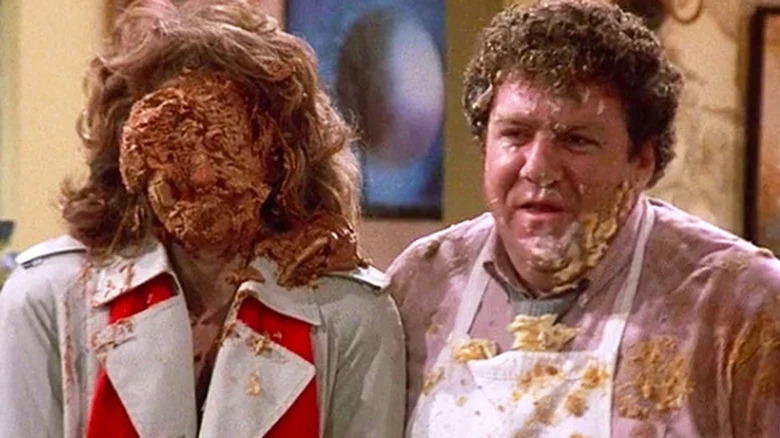
For eleven seasons, NBC's "Cheers" captured audiences both then and today -- making it one of the most well-regarded television series ever. "Cheers" follows Sam Malone (Ted Danson), a former pitcher for the Red Sox who runs a neighborhood bar in Boston. The rest of the beloved characters congregate at the bar to relax and share stories about their lives.
One such character is Norm Peterson (George Wendt). Norm is the bar's best customer, appearing in all 275 episodes. While Norm mentions his wife Vera, she never appears in the series. Well, that's not exactly true – Vera does appear on the show once, but you can't see her face.
In season 5's "Thanksgiving Orphans," Norm and Vera arrive at a Thanksgiving dinner to be met with an unwelcome culinary surprise. The rest of the dinner guests are engaged in a fierce food fight, resulting in Vera getting a chocolate pie to the face. Curious viewers dying to see what Vera looks like were denied. When the camera cuts to Vera and Norm, Vera's face is covered in (and concealed by) pie. "Charming friends, dear," she says. "Get your coat."
The voice that delivers this line is George Wendt's actual wife, Bernadette Birkett, but the woman who gets pied in the face is an actress named Rebecca Soladay. Interestingly enough, both actresses appear as other characters on the show (via MeTV).
Maris, Niles' Ex-Wife (Frasier)
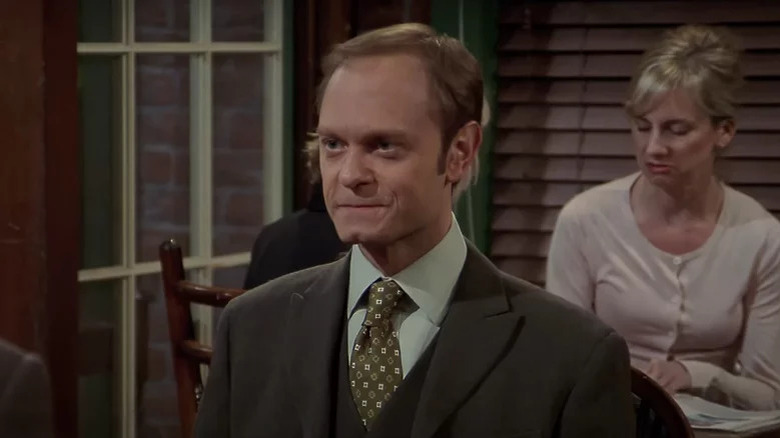
The NBC sitcom "Cheers" sparked two spin-offs: the wildly successful "Frasier" and the not-so-successful "The Tortellis." Frasier follows Frasier Crane (Kelsey Grammar), who has moved from Boston to Seattle and works on a radio talk show dispatching therapeutic advice. Like "Cheers," "Frasier" ran for a remarkable 11 seasons and succeeded primarily because of its eccentric yet lovable characters.
"Frasier" has another thing in common with its predecessor: the mysterious unseen wife. The invisible woman in "Frasier" is Maris, the first wife of Niles Crane (David Hyde Pierce), though they divorce later in the series. Maris' absence wasn't supposed to be prolonged, according to co-creator David Lee. Lee told Yahoo TV that they initially wanted Maris to be discussed but never seen as an homage to Vera in "Cheers," but only for a few episodes. Eventually, she would appear.
A problem quickly arose because of how the other characters talked about her. Her physical appearance was discussed in detail, as were the often contradictory or hyperbolic elements of her personality. All these outrageous jokes "made it logistically impossible for a human woman to portray her," Megan Garber writes in the Atlantic. "Some characters just have to be off-screen," Lee said. "The more you talk about them, the more impossible they become to cast."
Rebecca (Rebecca)
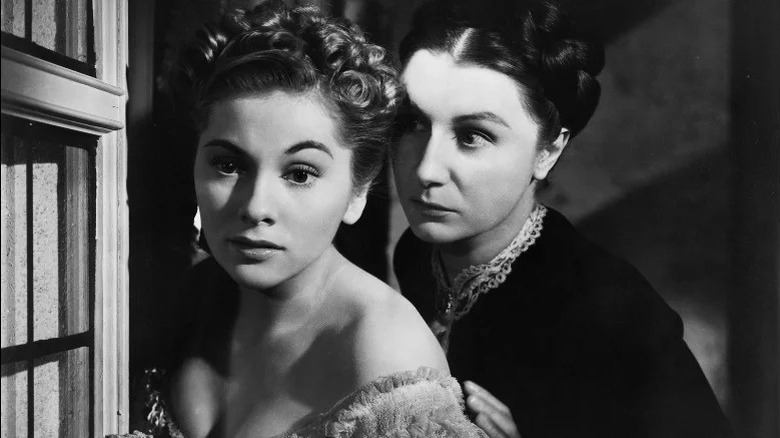
Something is intriguing about a film where the title character never appears on-screen. Such is the paradox at the center of "Rebecca," Hitchcock's 1940 adaptation of the book of the same name by Daphne du Maurier. One of Hitchcock's best but sadly undersung films, "Rebecca" is a thrilling noir that takes the form of a ghost story. But it is a ghost story in a metaphorical sense, as the ghost in question is never seen or heard.
Joan Fontaine plays a woman named Mrs. de Winter, though she is not the first woman with this name. She has recently married a charming but mysterious man named Maxim de Winter (Laurence Olivier), who takes her back to his imposing estate, Manderley. Maxim's first wife, Rebecca, died under mysterious circumstances. Her absence at Manderley isn't an absence at all. Mrs. Danvers (Judith Anderson) is deeply obsessed with Rebecca, and Maxim's obstinate refusal to talk about her speaks volumes.
While there are no pictures of Rebecca around the house, the film alludes to her beauty. Mrs. Danvers keeps Rebecca alive by reminiscing about the things she once did. The second Mrs. de Winter tries to live up to the impossible standard she set, implicitly embodying her predecessor in a way that Maxim finds aggravating. Rebecca's invisibility only makes her omnipresence that much weightier. She may be dead, but she is not gone, even though she is not visible to those still living.
The Adults In Peanuts
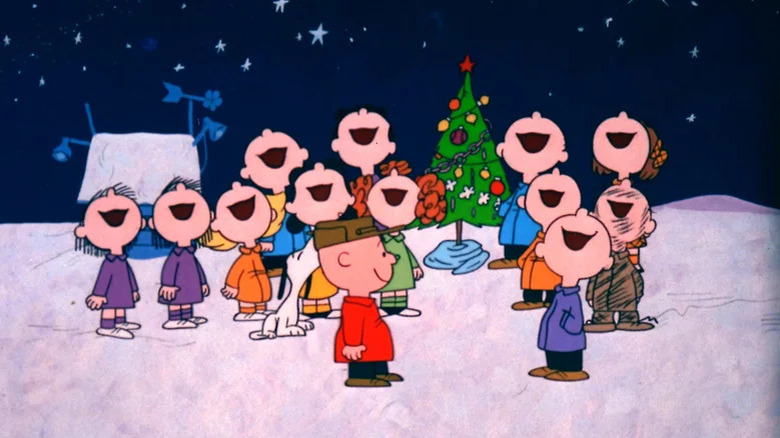
Sometimes, grown-ups aren't necessary. That's exactly the conclusion that Charles M. Schulz, the creator of the "Peanuts" stories, came to while working on his acclaimed comics. If you've ever watched a "Peanuts" special, you're probably aware of the fact that adults never appear -- at least not from the waist up. You can only ever see their lower halves. When they talk, all that comes out is the sound: "mwa, mwa, mwa."
Schulz's characters have spawned full-length films, television specials, and nearly fifty TV movies. But they originally began on a humble comic strip. Schulz explained his decision to exclude adults from his comics in 1975. While he usually says adults aren't in the comic strip because they wouldn't fit, the actual reason is, "They have been left out because they would intrude in a world where they could only be uncomfortable." He expanded on his thoughts in 1997, explaining that "the adults bring everything back to reality. And it just spoils it."
Within the world of "Peanuts" films and television specials, adults have become famous for the strange noises they make in place of actual dialogue. Composer Vince Guaraldi used a musical instrument to mimic the sound of someone talking. He decided on the trombone, and the rest is history!
Charlie (Charlie's Angels Show And Films)
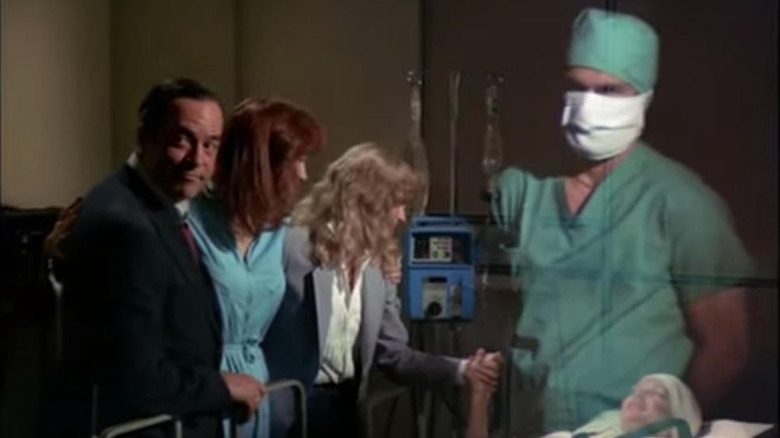
"Charlie's Angels" is another example of a film or series where the title character never makes an appearance. The original "Charlie's Angels" series ran from 1976 to 1981, starring Jaclyn Smith, Farrah Fawcett, and Kate Jackson as the titular Angels. The three women work for a mysterious man named Charlie (voiced by John Forsythe), who relays instructions to them over the phone, but isn't seen, apart from occasional glimpses of the back of his head.
Fans finally got a look at Charlie in the season finale, when he arrives at the hospital and dons surgical scrubs to help save Kelly's (Smith) life. However, his face remains concealed in a mask. Forsythe never acted on the set, so they used a body double for this final scene (via Ultimate Classic Rock).
The first two "Charlie's Angels" movies used a similar tactic but starred Drew Barrymore, Cameron Diaz, and Lucy Liu as the titular angels. John Forsythe reprised his role as the voice of Charlie for both films. His part in the sequel was his final role before his retirement and death. At the end of the 2000 film, the Angels ask Charlie to join them at the beach. The scene then cuts to a man walking on the beach and talking on a cell phone. However, we only see the back of his head. The viewer suspects it's Charlie, but what he looks like remains a preserved mystery.
The Blair Witch (The Blair Witch Project)
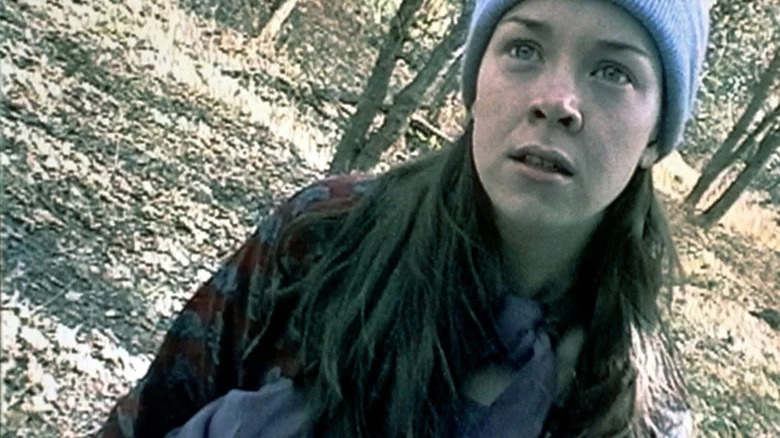
"The Blair Witch Project" may be the most controversial horror film ever. When the movie premiered at Sundance in 1999, many viewers weren't aware the film was fictional. Some thought it was a documentary (a misunderstanding accentuated by the film's marketing campaign). Understandably, this confusion terrified audiences, and the atmosphere around the film was electric.
"The Blair Witch Project" is a found footage-style horror film. The filmmakers used two handheld camcorders to shoot the movie. Not everything the characters see appears on film for the viewer, which adds to the thrills. The film concludes with (Heather Donahue) and Mike (Michael C. Williams) entering a dilapidated house in the forest in search of their missing friend, Josh (Joshua Leonard). Heather and Mike wind up knocked out – presumably dead – but not before Heather's camera seemingly moves through the house of its own accord.
Although it's a chilling ending, one character is notably absent: The Blair Witch. There are several theories as to what happened in that house. One theory supposes that Heather's camera shows the Blair Witch's perspective as she glides around the room. Another theory argues we're in Josh's perspective -- after the Blair Witch possessed him off-screen. Of course, we're not sure the Blair Witch exists, as the trio never concluded their investigation. Either way, the ambiguity of the ending is a vital part of what makes it so terrifying.
Hal Phillip Walker (Nashville)
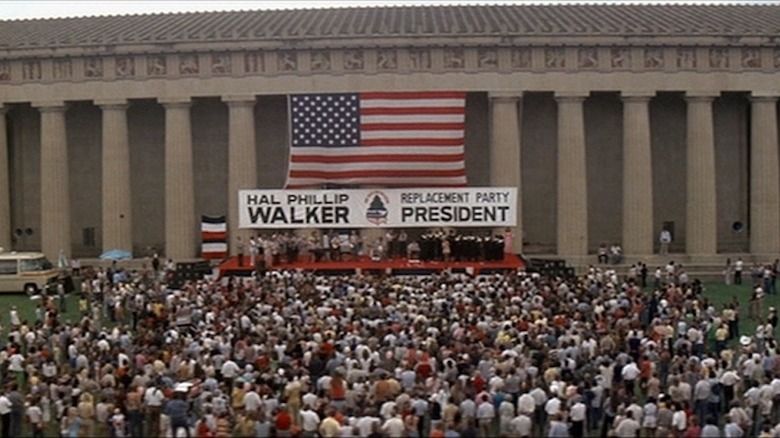
You either love or hate Robert Altman's 1975 film "Nashville." A novel experiment for cinema, "Nashville" follows numerous residents of the titular city as they go about their lives. Instead of following a linear narrative, the camera pans across the landscape, capturing the city's residents as their days unfold without staying in one place for long.
Country music features prominently in the film. Two of its main characters are singers Barbara Jean (Ronee Blakley) and Connie White (Karen Black) -- though there are no real protagonists. Another central theme for the film is the political climate of Nashville – as well as America – acting as the film's backdrop. The film's de-facto narrator is a politician named Hal Phillip Walker (Thomas Hall Phillips), the face of "The Replacement Party." Walker's speeches are featured periodically, but we never see his face.
Walker is a third-party candidate, and it's never clear what his platform is – only what he's against (which is most things). He's frequently heard spouting nonsensical idioms like: "No wonder we often know how to make a watch, but we don't know the time of day." Of course, who or what Walker is isn't that important, which is why he can stand to be invisible. Rather, it's what he represents that's significant. When the social and political unrest that Walker typifies reaches a boiling point, the result is nothing short of deadly.
Rosemary's Baby (Rosemary's Baby)
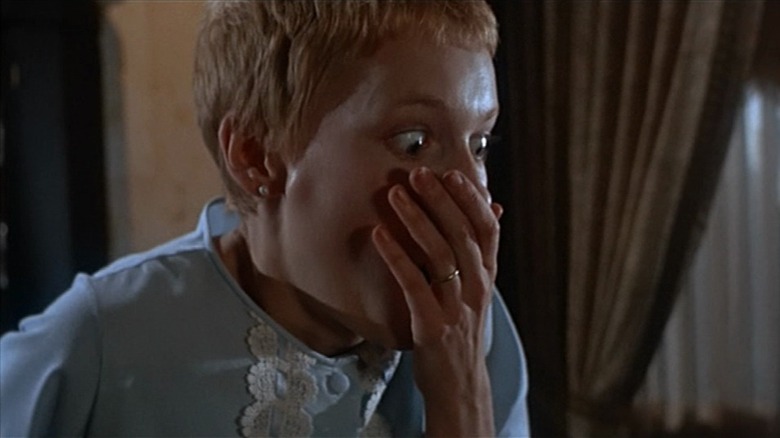
Directed by Roman Polanski (now known as an alleged sexual abuser on multiple accounts), "Rosemary's Baby" is still one of the greatest psychological thrillers. Mia Farrow's work is the highlight of the film. All domestic horror films that have come in its wake must contend with it and her looming legacy. The film follows Rosemary (Farrow) and Guy Woodhouse (John Cassavetes), a young couple hoping to start a family. They move into a strange old apartment building and meet their eccentric neighbors. Rosemary soon learns that she's pregnant, but she fears something sinister is behind the pregnancy.
Rosemary is pregnant for most of the film, so it's not surprising that we never see her baby on-screen. But the baby's absence becomes notable in the film's chilling conclusion. Rosemary walks up to her baby's cradle, looking shocked at what she finds. We never see the sight, but she reacts with utter revulsion.
"What have you done to its eyes?" She asks. The cult's leader responds that the baby's father is Satan, which is why its eyes look the way they do. One would assume that the baby has some disfigurement -- or at least creepy eyes -- but we're left to imagine it. This omission heightens the dread we feel as viewers, focusing our attention on Farrow's astounding performance.
If you or anyone you know has been a victim of sexual assault, help is available. Visit the Rape, Abuse & Incest National Network website or contact RAINN's National Helpline at 1-800-656-HOPE (4673).
Superman (Smallville)
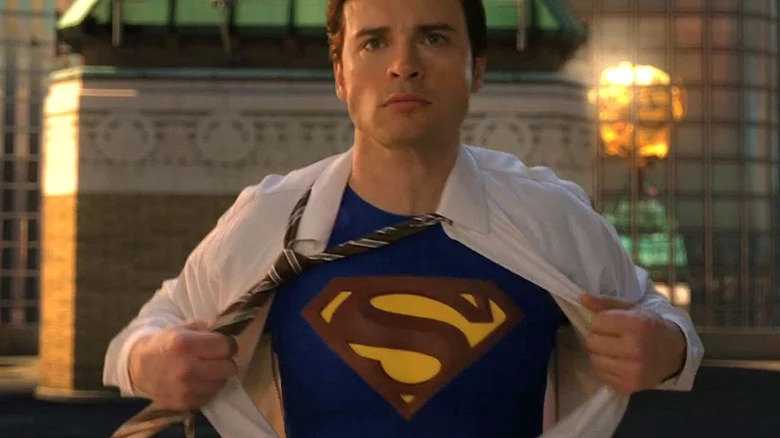
If you've never watched The CW series "Smallville," which serves as Clark Kent's origin story, you might assume that Superman features prominently throughout its run. Oddly enough, that's not the case. We never see Superman in his full-suited glory throughout the show's ten seasons.
There are some logical reasons for this. "Smallville" follows a teenage Clark Kent (Tom Welling) still adjusting to his powers. He hasn't yet taken on the Superman mantle. Welling told EW that this was always the series' intention, sharing that the "show is about a teenager trying to figure out who he is." He also noted that the expense of visual effects played a factor.
In the series finale, Clark finally becomes Superman. But we're not privy to this part of the story. Clark rips open his shirt to reveal the House of El symbol, but he quickly becomes a dot in the sky. At first, the series was going to end with a sequence where Clark saves the day as Superman. However, Welling didn't like the idea, so they reworked its ending. Welling explained the tone they wanted to hit with the finale, stating, "the idea is that Clark becomes Superman and he's out there, and we know he's out there, but we can't go with him."
Read this next: Every DC Movie Made Prior To The DCEU Ranked From Worst To Best
The post Famous Characters Who Never Actually Appear On Screen appeared first on /Film.
